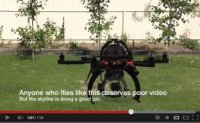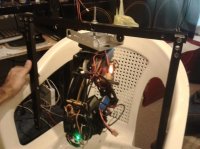Macsgrafs
Active Member
Ross that looks good!
Much more stable than mine is right now! Can't see anything wrong with that :tennis:
watch the horizon as I turn the octo, it slants over badly, check just after the first flyover of the stones on the cliff.
How about using this forum for helping each other. This forum needs to stay on topic a bit better. I don;t have the time to read the endless rants. Sure, make your complaint and end it there. I have had better luck with RSGS than picloc so far. But, I sure would like some advice getting this thing set up better. It is close to being what I need.
Thats what I thought we were all here for..to help each other. But it seems certain individuals would rather have a go at people who have a legitimate complaint! The bottom line is, I bought a peace of equipment in good faith, which has turned out to be not as advertised..in this country (UK) that is false advertisement, but if you are happy to be conned & lose money, please feel free to take a back seat & let people like me fight on to get it sorted.
Thanks you.
Ross


